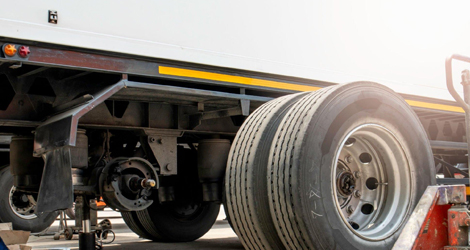
Trailer suspension systems play a crucial role in ensuring smooth rides and safe transportation of goods on the road. Whether you’re a truck driver, fleet manager, or maintenance personnel, understanding the basics of trailer suspension maintenance and repair is essential to keep your vehicles in top condition and minimize downtime. In this guide, we’ll delve into the key components of trailer suspension systems, standard maintenance practices, and troubleshooting tips to keep your trailers rolling smoothly.
Leaf Springs: Leaf springs are a fundamental component of many trailer suspension systems. They provide support and cushioning by absorbing shocks and vibrations from the road surface.
Air Springs: Air springs replace traditional metal springs in air suspension systems. These springs use compressed air to adjust the ride height and provide a smoother ride.
Shock Absorbers: Shock absorbers, or dampers, help control the movement of the suspension system by dampening oscillations and reducing bouncing.
Axles: The trailer’s axles bear the weight of the cargo and the trailer itself. They connect the wheels to the suspension system and facilitate movement.
Equalizers: Equalizers distribute weight evenly across multiple axles, ensuring balanced weight distribution and stability.
Regular Inspections: Examine the suspension system regularly, looking for indications of wear, damage, or lost parts.
Lubrication: Keep pivot points and moving parts well-lubricated to lower friction and increase component longevity.
Tire Maintenance: Proper tire inflation and alignment are essential for the best possible suspension performance and tire longevity.
Alignment Checks: Periodically check the alignment of the suspension components to ensure proper tracking and handling.
Component Replacement: To stop additional damage and guarantee safe operation, replace worn-out or damaged components immediately.
Uneven Tire Wear: Uneven tire wear may signal alignment problems or worn suspension components. Inspect the suspension system and address any underlying issues promptly.
Excessive Bouncing: Excessive bouncing or vibrations while driving may indicate worn shock absorbers or air springs. Replace these components if necessary to restore ride quality.
Sagging Suspension: Sagging suspension can lead to poor handling and increased wear on tires and other components. Check for worn leaf springs or air springs and replace them as needed.
Noisy Suspension: Unusual noises such as clunking or squeaking can indicate loose or worn suspension components. Inspect and tighten or replace as necessary to eliminate noise and ensure proper function.
Trailer suspension systems must be adequately maintained and repaired on time to guarantee their longevity, performance, and safety. By understanding the key components, practicing regular maintenance, and addressing issues promptly, you can keep your trailers rolling smoothly and minimize costly downtime on the road.
Seek advice from trained experts at Truck Repair Hotline Inc. regarding upkeep or repairs, or refer to the manufacturer’s instructions for recommendations specific to the model and make of your trailer. With proactive care and attention, guided by professionals like Truck Repair Hotline Inc., you can maximize the reliability and efficiency of your trailer suspension systems for years to come.
Comments are closed